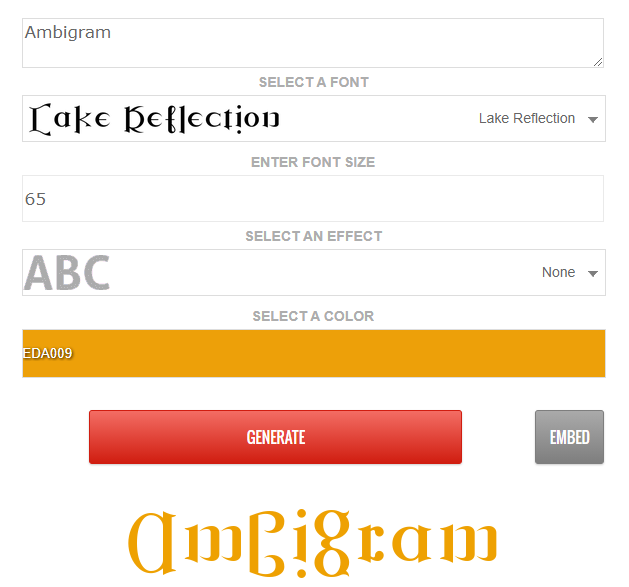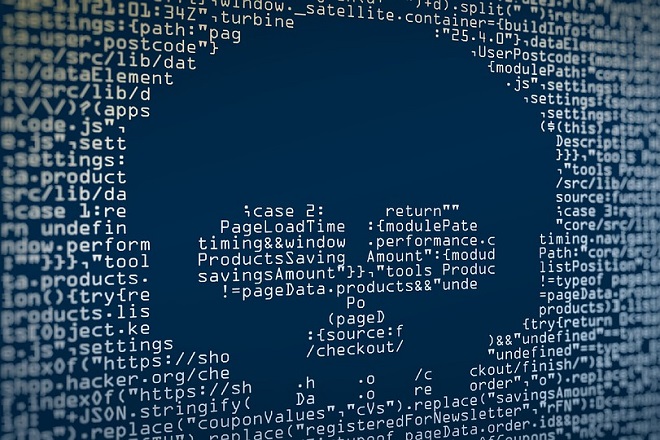In the past decade, blockchain technology has emerged as a transformative force across various industries, from finance to healthcare, supply chain management to digital identity verification. As businesses and individuals increasingly recognize the benefits of decentralization, transparency, and security that blockchain offers, the demand for skilled blockchain developers is surging. This guide aims to provide a comprehensive overview of the blockchain development process, covering everything from ideation to deployment, while also addressing the challenges developers may encounter along the way.
What is Blockchain?
At its core, blockchain is a decentralized, distributed ledger technology that records transactions across multiple computers. Each transaction is grouped into a block and linked to the previous block, forming a chain of blocks—the blockchain. This structure ensures that once data is recorded, it cannot be altered without the consensus of the network, making it highly secure and tamper resistant.
Key Features of Blockchain
Blockchain technology has revolutionized the way we think about data storage, security, and transaction processing. Here are some of the key features that define blockchain technology:
Immutability
One of the most significant features of blockchain is its immutability. Once data is recorded on the blockchain, it becomes extremely difficult to alter or delete. Each block in the chain contains a cryptographic hash of the previous block, creating a secure link between them. This structure ensures that any attempt to change a block would require altering all subsequent blocks, which is impossible without the consensus of the network. This characteristic enhances the integrity of the data and builds trust among users.
Decentralization
Blockchain operates on a decentralized network, meaning that no single entity has control over the entire blockchain. Instead, it is maintained by a distributed network of nodes (computers) that validate and record transactions. This decentralization eliminates the need for central authority, reducing the risk of fraud and manipulation. It also enhances the resilience of the network, as there is no single point of failure.
Transparency
Transparency is a fundamental aspect of blockchain technology. All transactions are recorded on a public ledger that is accessible to all participants in the network. This level of transparency not only reduces the potential for fraud but also fosters trust among users. Participants can independently verify transactions, ensuring that the information is accurate and reliable.
Enhanced Security
Blockchain employs advanced cryptographic techniques to secure data. Each transaction is encrypted and linked to the previous transaction, making it impossible for unauthorized parties to alter the data. Additionally, the use of public key cryptography allows users to securely identify themselves and authorize transactions. Each participant has a unique pair of keys: a public key, which is shared with the network, and a private key, which is kept secret.
Distributed Ledger Technology (DLT)
At the heart of blockchain is distributed ledger technology. Unlike traditional databases that are stored in a single location, a blockchain ledger is distributed across multiple nodes in the network. This distribution ensures that all participants have access to the same information, reducing discrepancies and enhancing data integrity. It also makes the system more resilient to attacks, as there is no central point that can be targeted.
Consensus Mechanisms
Blockchain networks rely on consensus mechanisms to validate transactions and maintain the integrity of the ledger. These mechanisms ensure that all participants agree on the state of the blockchain before any new data is added. Common consensus algorithms include Proof of Work (PoW) and Proof of Stake (PoS), each with its own advantages and trade-offs. These mechanisms help prevent double-spending and ensure that all transactions are legitimate.
Smart Contracts
Blockchain technology enables the use of smart contracts, which are self-executing contracts with the terms of the agreement directly written into code. Smart contracts automatically execute actions when predefined conditions are met, eliminating the need for intermediaries. This feature enhances efficiency and reduces costs in various applications, from financial transactions to supply chain management.
Tokenization
Blockchain allows for the tokenization of assets, enabling the representation of real-world assets (such as real estate, art, or stocks) as digital tokens on the blockchain. This process facilitates fractional ownership, making it easier for individuals to invest in high-value assets. Tokenization also enhances liquidity, as these digital assets can be easily traded on blockchain platforms.
Auditability
The transparent and immutable nature of blockchain makes it highly auditable. Every transaction is recorded in a way that allows for easy tracking and verification. This feature is particularly beneficial for industries that require strict compliance and auditing, such as finance and healthcare. Organizations can easily trace the history of transactions, ensuring accountability and transparency.
Interoperability
As blockchain technology evolves, interoperability between different blockchain networks is becoming increasingly important. This feature allows various blockchains to communicate and share data with one another, enhancing the overall functionality of the technology. Interoperability can lead to the development of more complex applications and services that leverage multiple blockchains.
The Blockchain Development Process
Ideation and Research
- Identifying the Problem to Solve
The first step in the blockchain development process is to identify a specific problem that can be addressed through blockchain technology. This could range from improving supply chain transparency to creating a decentralized marketplace. The key is to understand the pain points of your target audience and how blockchain can provide a solution.
- Conducting Market Research
Once the problem is identified, conducting thorough market research is essential. This involves analyzing existing solutions, understanding competitor offerings, and identifying gaps in the market. Engaging potential users through surveys or interviews can provide valuable insights into their needs and preferences.
Choosing the Right Blockchain Platform
Overview of Popular Blockchain Platforms
There are several blockchain platforms available, each with its unique features and use cases. Some of the most popular include:
- Ethereum: Known for its smart contract functionality, Ethereum is widely used for decentralized applications (dApps) and Initial Coin Offerings (ICOs).
- Hyperledger: A consortium of various blockchain frameworks, Hyperledger is designed for enterprise solutions, focusing on permissioned blockchains.
- Binance Smart Chain: A high-performance blockchain that supports smart contracts and is compatible with Ethereum, making it popular for DeFi projects.
Factors to Consider
When selecting a blockchain platform, developers should consider factors such as:
- Scalability: Can the platform handle a growing number of users and transactions?
- Security: What measures does the platform have in place to protect against attacks?
- Community Support: A strong developer community can provide valuable resources and support.
- Cost: Consider the cost of deploying and maintaining applications on the platform, including transaction fees.
Designing the Architecture
Defining the Architecture
Once the platform is chosen, the next step is to design the architecture of the blockchain application. This involves defining the components of the system, including:
- Nodes: Determine the number and types of nodes required for the network (e.g., full nodes, light nodes).
- Consensus Mechanism: Choose a consensus algorithm (e.g., Proof of Work, Proof of Stake) that aligns with the goals of the project.
- Data Structure: Decide how data will be stored and organized on the blockchain.
Importance of UI/UX Design
In addition to technical architecture, attention must be given to the user interface (UI) and user experience (UX) design. A well-designed UI/UX can significantly enhance user engagement and satisfaction, making it easier for users to interact with the application.
Smart Contract Development
What are Smart Contracts?
Smart contracts are self-executing contracts with the terms of the agreement directly written into code. They automatically execute actions when predefined conditions are met, eliminating the need for intermediaries.
Writing and Deploying Smart Contracts
The development of smart contracts typically involves the following steps:
- Define Contract Logic: Outline the rules and conditions that govern the contract.
- Choose a Programming Language: Depending on the blockchain platform, select a suitable programming language (e.g., Solidity for Ethereum).
- Write the Code: Develop the smart contract code, ensuring it adheres to best practices for security and efficiency.
- Testing the Contract: Before deployment, conduct thorough testing in a test environment to identify and fix any bugs or vulnerabilities.
- Deployment: Once tested, deploy the smart contract to the blockchain. This process usually involves submitting the contract code and paying any associated transaction fees.
Blockchain Development
Detailed Steps for Development
The actual blockchain development process encompasses several stages:
- Environment Setup: Set up the development environment, including installing necessary tools and libraries.
- Coding: Write the code for the blockchain application, focusing on both the backend and frontend components.
- Integration: Integrate smart contracts with the application, ensuring seamless interaction between the two.
- Testing and Debugging: Conduct extensive testing to identify and resolve any issues. This may involve unit testing, integration testing, and end-to-end testing.
- Documentation: Document the code and development process to facilitate future maintenance and updates.
Tools and Technologies
Developers often use a variety of tools and technologies in the blockchain development process, including:
- Integrated Development Environments (IDEs): Tools like Remix and Visual Studio Code for writing and testing smart contracts.
- Frameworks: Development frameworks such as Truffle and Hardhat that simplify the process of building and testing dApps.
- Version Control: Tools like Git for version control and collaboration among developers.
Testing the Blockchain Application
Importance of Rigorous Testing
Testing is a critical phase in the blockchain development process. Given the immutable nature of blockchain, any bugs or vulnerabilities can have severe consequences. Rigorous testing ensures that the application functions as intended and meets security standards.
Types of Testing
- Unit Testing: Testing individual components or functions of the application to ensure they perform correctly.
- Integration Testing: Testing the interaction between different components or modules of the application.
- User Acceptance Testing (UAT): Involving end-users in testing to ensure the application meets their needs and expectations.
Deployment and Maintenance
Steps for Deployment
Once testing is complete, the blockchain application can be deployed to the mainnet. The deployment process typically involves:
- Final Review: Conduct a final review of the code and architecture.
- Deployment to Mainnet: Submit the application to the mainnet, ensuring that all configurations are correct.
- Monitoring: After deployment, continuously monitor the application for performance, security, and user feedback.
Ongoing Maintenance
Maintenance is crucial for the long-term success of a blockchain application. This includes:
- Regular Updates: Implement updates to improve functionality and security.
- Community Engagement: Stay engaged with users to gather feedback and address concerns.
Challenges in Blockchain Development
Technical Challenges
Despite its potential, blockchain development comes with several technical challenges:
- Scalability Issues: Many blockchain platforms struggle to handle a high volume of transactions, leading to delays and increased costs.
- Interoperability: The ability for different blockchains to communicate and work together is still a significant hurdle.
- Security Vulnerabilities: As seen in several high-profile hacks, security is a critical concern for blockchain applications.
Regulatory Challenges
The regulatory landscape surrounding blockchain technology is constantly evolving. Developers must navigate complex regulations that vary by jurisdiction. This includes compliance with data protection laws, anti-money laundering (AML) regulations, and securities laws.
Future Trends in Blockchain Development
Emerging Technologies
As blockchain technology continues to evolve, several emerging trends are shaping its future:
- Integration with AI: The combination of blockchain and artificial intelligence (AI) can enhance data security and improve decision-making processes.
- Internet of Things (IoT): Blockchain can provide a secure framework for managing IoT devices, ensuring data integrity and privacy.
- Decentralized Finance (DeFi): The rise of DeFi applications is revolutionizing traditional financial systems, offering new opportunities for developers.
Industry Adoption
Various industries are increasingly adopting blockchain technology to enhance efficiency and transparency. For example:
- Supply Chain Management: Companies are using blockchain to track the movement of goods, ensuring authenticity and reducing fraud.
- Healthcare: Blockchain can securely store and share patient records, improving data interoperability and patient care.
- Voting Systems: Some jurisdictions are exploring blockchain for secure and transparent voting processes.
Conclusion
The blockchain development process is complex and multifaceted, requiring a deep understanding of both technical and business considerations. By following the outlined steps—from ideation and research to deployment and maintenance—developers can create robust and secure blockchain applications that address real-world problems.
As blockchain technology continues to mature, the potential for innovation is vast. By embracing the challenges and opportunities presented by this transformative technology, developers can position themselves at the forefront of the digital revolution. Whether you are a seasoned developer or just starting, the world of blockchain development offers exciting possibilities for those willing to explore its depths.






